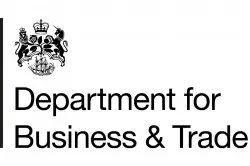For businesses today, online customer ratings and reviews are crucial, from standing out in Google search to building trust in prospective customers. A five-star review shared by a happy shopper can have the potential to beat traditional ads, whilst a one-star review takedown can leave a business playing the defence.
With brand trust and business growth riding on public feedback, how should businesses manage collecting these pivotal reviews? By building review functionality into their sites directly? Allowing customers to search for somewhere to leave a review? Or, asking directly for a review after the customer has interacted with their brand?
Essentially – a closed review platform or an open one? Trade-offs do exist, so strategic considerations matter when it comes to choosing the best platforms for you!
The potential of open platforms
Open access platforms broaden the scope – inviting the world to leave reviews, be they real experiences or fake ones. Essentially, no barriers exist – anyone and everyone may weigh in if motivated enough to do so. What does a business stand to gain from such outward transparency?
For one, volume itself becomes valuable! More user-generated content helps to raise visibility and attracts additional traffic to your site. An open stage helps both negative and positive feedback surface freely, adding a mark of authenticity if responses to those negative reviews address the concerns in a good manner.
However, risks remain ever present with an open platform. Truly preventing bogus or simply irrelevant perspectives can prove to be nearly impossible. The burden falls onto the business to flag issues, whilst facing crisis response publicly also raises the stakes.
The case for closed review systems
Closedplatforms limit the ability of leaving reviews to only verified customers or clients – essentially “locking” access for security and control. Reviews can only be left after proof of purchase, confirmed buyer status or pre-autorisation. The extra steps ensure legitimacy and prevent fake reviews from corrupting perception. But, what does a business gain in return for a more hands-on review collection process?
For starters, credibility! Customers recognise that real customer perspectives carry more weight and reviews from a trusted third-party review platform puts the minds of prospective customers at rest – assuring them that the reviews left are from real customers.
Next, closed platforms help with relevance. Reviews remain factual and tied directly to the actual offerings reviewed – this aids both SEO and prospective customers, simultaneously providing them with precise insights.
Moderation can sound like it causes more workload compared to simply opening the floodgates with no restrictions. However, using a closed platform can foster a high level of trust and credibility among users and protection from brand attacks or spam.
Finding your review path
So, closed or open platforms when considering your review collection plan? As with most strategic calls, it can depend on your individual preferences. A decision should only be made after evaluating brand objectives, marketing goals and risk tolerance.
Remember, no business can truly be closed to feedback from the public – that would defeat the purpose of it! But, steps can be taken to minimise the risk brought with this fact whilst still ensuring your clients can leave reviews.
No matter which model you choose, keep your critics close – because 5-star reviews can rocket a business above the competition!
This article comes courtesy of Trustist, making online reputation and payments easy.
































